My Vets, My VA
Tuesday, August 22, 2006
 I'm a cemetery person and I have five to choose from in easy walking distance. My dead are in Calvary Cemetery, but this afternoon I walked the grounds of what's now called The Clement J. Zablocki VA Medical Center, but what I'll always call The Soldier's Home. Because, well, that's what my mom calls it.
I'm a cemetery person and I have five to choose from in easy walking distance. My dead are in Calvary Cemetery, but this afternoon I walked the grounds of what's now called The Clement J. Zablocki VA Medical Center, but what I'll always call The Soldier's Home. Because, well, that's what my mom calls it. As a kid I somewhere absorbed the myth that the Ward Memorial Theater was an exact replica of Ford's Theatre in Washington. Now a laptop instantly punctures that myth for neighborhood kids, lowering the creepiness factor, but I'm thinking probably not entirely eliminating it. I see the founding document for the grounds is dated just ten days after the end of The Civil War.
As a kid I somewhere absorbed the myth that the Ward Memorial Theater was an exact replica of Ford's Theatre in Washington. Now a laptop instantly punctures that myth for neighborhood kids, lowering the creepiness factor, but I'm thinking probably not entirely eliminating it. I see the founding document for the grounds is dated just ten days after the end of The Civil War.The vets now call the Domiciliary the "Hoptel" -- free lodging for out-of-town veterans here for outpatient or follow-up care.
As a kid I was told some guys wounded on Omaha Beach were shipped directly to these grounds -- and they never left. As I understand it, floors 9 and 10 are essentially now a nursing home. Architecturally speaking, if some Red Army soldiers from Stalingrad were shipped here because of overcrowding in facilities built in Soviet-era Russia, they'd feel right at home.
As a kid I was told some guys wounded on Omaha Beach were shipped directly to these grounds -- and they never left. As I understand it, floors 9 and 10 are essentially now a nursing home. Architecturally speaking, if some Red Army soldiers from Stalingrad were shipped here because of overcrowding in facilities built in Soviet-era Russia, they'd feel right at home.
National Avenue
"Bar Open 6:00 AM Tues-Sat." Flanking the main hospital on National Avenue is a string of hotels, bars and single-room-occupancy's -- not an easy landing strip if you're fresh out of rehab. I know of one vet from the previous Gulf War whose first residence on release was this SRO, with an entrance through the bar on the ground floor. His neighbor introduced himself as "Snowball".
I'm talking to Bill and Cathy, I'll call them. They're generally satisfied with the care Bill gets at the VA. He's here for followup after major surgery. "Things take a while", he says. "You have to wait for appointments, but the care is good." He's particularly happy about doctors rotating in from Froedtert Memorial Hospital. And the pristine condition of the cemetery grounds gives him comfort.
Bill's dad was a WWII vet who spent time in a German POW camp. When, 50 years after the war, Bill and Cathy brought him here for Alzheimers evaluation, an MRI scanning the back of his head revealed a fracture from a German soldier's rifle butt.
Bill understood immediately my particular city-brand of attraction to the Great Blue Heron. He gave me directions to a heron rookery far off the beaten path in the north woods. "Wear your boots," he said laughing. "Because the place is covered with heron shit and fish bones."
The grounds certainly carry the weight of historical memory. There's understandable controversy over a plan to put some of the property to commercial use.
I didn't think I would include this shot. Now that I've titled the entry, "My Vets, My VA", let me just say: When I was a kid we used to play football on this grass. It was an open field. And in winter, standing up boldly on a flying saucer, I was one of the inventors of snowboarding.
I've seen the guys sometimes arrange a picnic table under a tree branch so they can hang an i.v. up there. I have no trouble returning to my cancer experience time and time again, now twelve years later.
A month ago I attended the funeral of a distant relative by marriage, an old timer who was a tail gunner and radio man on bombing missions over Germany in WWII. He flew in the B-17 called Dear Mom. I had two surprising moments that afternoon.
The first was panic when I looked at a scrapbook his family put together for Bill S. Pasted in was the list of missions he flew and I had to scan it to see if he'd been on a bombing run over Muhldorf, Germany on March 19, 1945, a botched effort destroying the dormitory where my father was living and killing some of dad's friends. Thankfully, no. Bill had been out of the war for a long time by then, had written a letter home saying "I'm as safe as a kitten curled up next to a fireplace", and had vowed never to set foot on an airplane again -- a vow he kept.
The second was graveside, standing as the priest delivered prayers, pushbuttoning the tired language of salvation, afterlife, and reconciliation. Then a stranger to us all, a highly decorated soldier whose sole occupation is now attending funerals, stepped some distance away under a tree, picked up his flugel, and blew a ghostly Taps. Thats when we found religion.
I'm talking to Bill and Cathy, I'll call them. They're generally satisfied with the care Bill gets at the VA. He's here for followup after major surgery. "Things take a while", he says. "You have to wait for appointments, but the care is good." He's particularly happy about doctors rotating in from Froedtert Memorial Hospital. And the pristine condition of the cemetery grounds gives him comfort.
Bill's dad was a WWII vet who spent time in a German POW camp. When, 50 years after the war, Bill and Cathy brought him here for Alzheimers evaluation, an MRI scanning the back of his head revealed a fracture from a German soldier's rifle butt.
Bill understood immediately my particular city-brand of attraction to the Great Blue Heron. He gave me directions to a heron rookery far off the beaten path in the north woods. "Wear your boots," he said laughing. "Because the place is covered with heron shit and fish bones."
The grounds certainly carry the weight of historical memory. There's understandable controversy over a plan to put some of the property to commercial use.
I didn't think I would include this shot. Now that I've titled the entry, "My Vets, My VA", let me just say: When I was a kid we used to play football on this grass. It was an open field. And in winter, standing up boldly on a flying saucer, I was one of the inventors of snowboarding.
I've seen the guys sometimes arrange a picnic table under a tree branch so they can hang an i.v. up there. I have no trouble returning to my cancer experience time and time again, now twelve years later.
A month ago I attended the funeral of a distant relative by marriage, an old timer who was a tail gunner and radio man on bombing missions over Germany in WWII. He flew in the B-17 called Dear Mom. I had two surprising moments that afternoon.
The first was panic when I looked at a scrapbook his family put together for Bill S. Pasted in was the list of missions he flew and I had to scan it to see if he'd been on a bombing run over Muhldorf, Germany on March 19, 1945, a botched effort destroying the dormitory where my father was living and killing some of dad's friends. Thankfully, no. Bill had been out of the war for a long time by then, had written a letter home saying "I'm as safe as a kitten curled up next to a fireplace", and had vowed never to set foot on an airplane again -- a vow he kept.
The second was graveside, standing as the priest delivered prayers, pushbuttoning the tired language of salvation, afterlife, and reconciliation. Then a stranger to us all, a highly decorated soldier whose sole occupation is now attending funerals, stepped some distance away under a tree, picked up his flugel, and blew a ghostly Taps. Thats when we found religion.
1 Comments:
commented by  Patricia Lynch, 6:53 AM
Patricia Lynch, 6:53 AM
 Patricia Lynch, 6:53 AM
Patricia Lynch, 6:53 AM
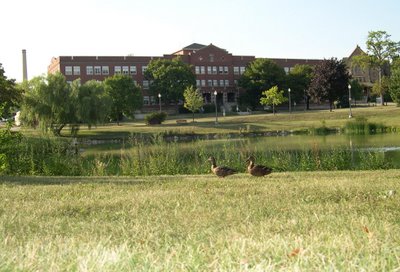
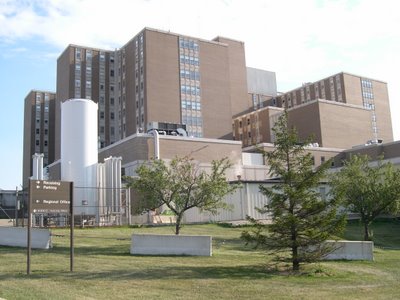
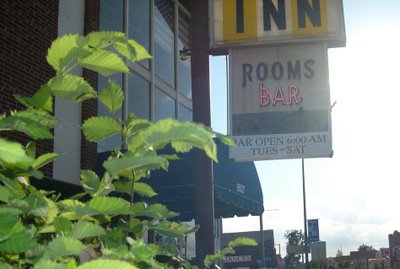
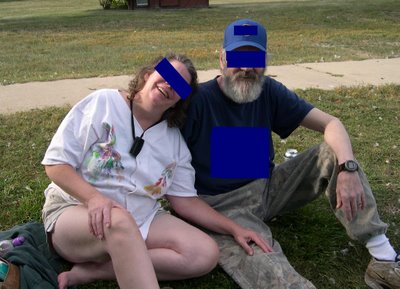
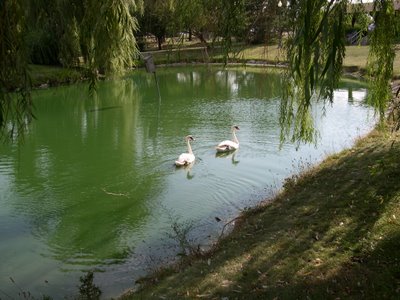
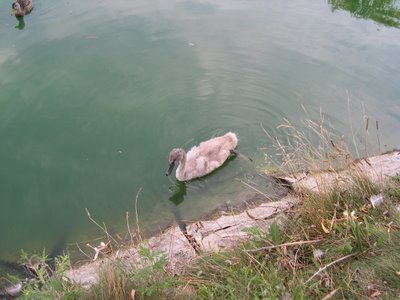

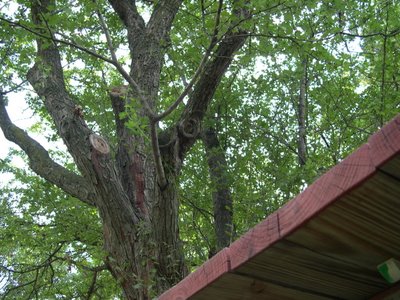


While the money raised at the Soldiers' Home Fair of 1865 eventually was turned over to the federal government to purchase this site, that was not the intent of the Lady Managers of the Wisconsin Soldiers' Home. The document from Governor Lewis was the State's official blessing and subsidy of an enterprise begun in the spring of 1864: a home for Wisconsin's soldiers. (I emphasize Wisconsin, although the ladies did not turn any worthy soldier away.)
From the beginning of their storefront operation on West Water Street (N. Plankinton), the women had been planning a permanent home and had even contracted E. Townsend Mix to design the building. (Mix did, under federal contract, design Old Main--the signature building of the National Soldiers Home Historic District.)
On a federal level, Lincoln signed a bill to incorpotate a national home on March 3, 1865. The board responsible for this project did not begin work until 1866, well after the Milwaukee Soldiers' Home Fair. After the usual lobbying and negotiating, the ladies were "persuaded" to abandon their plan and turn their assets over to the federal government.
Our organization will commemorate the transfer of soldiers from the ladies' care on May 12, 2007. See www.wssas.org for details.